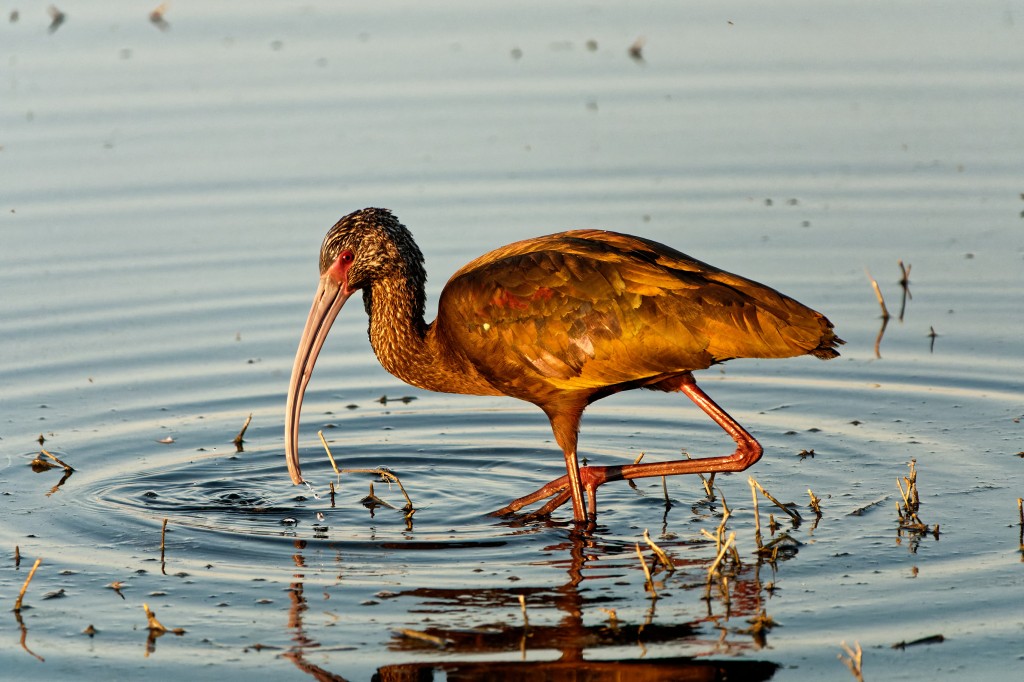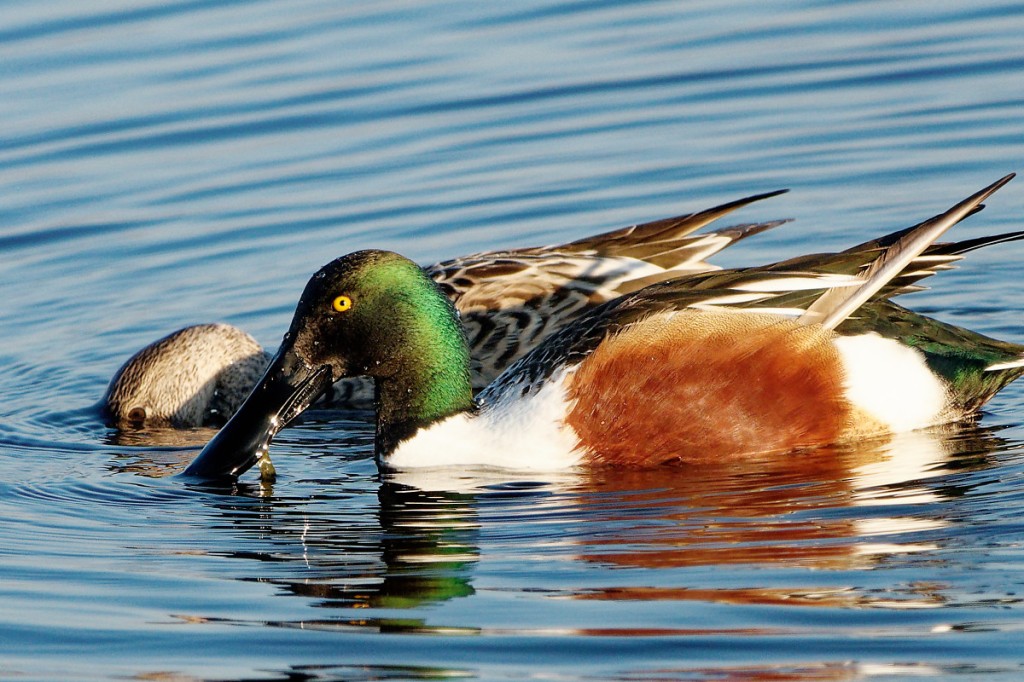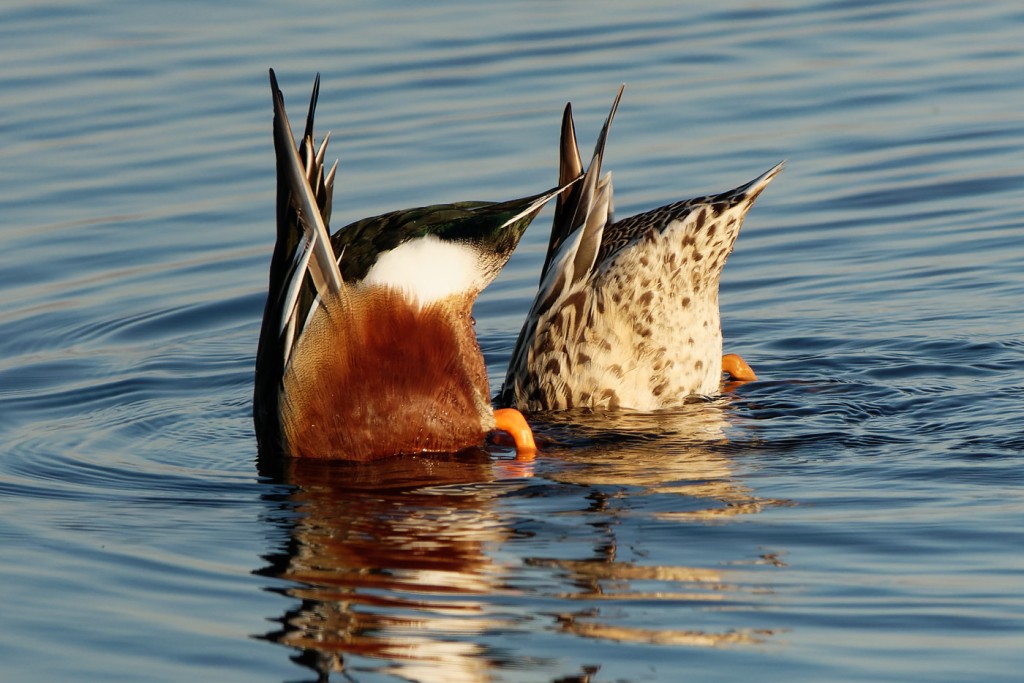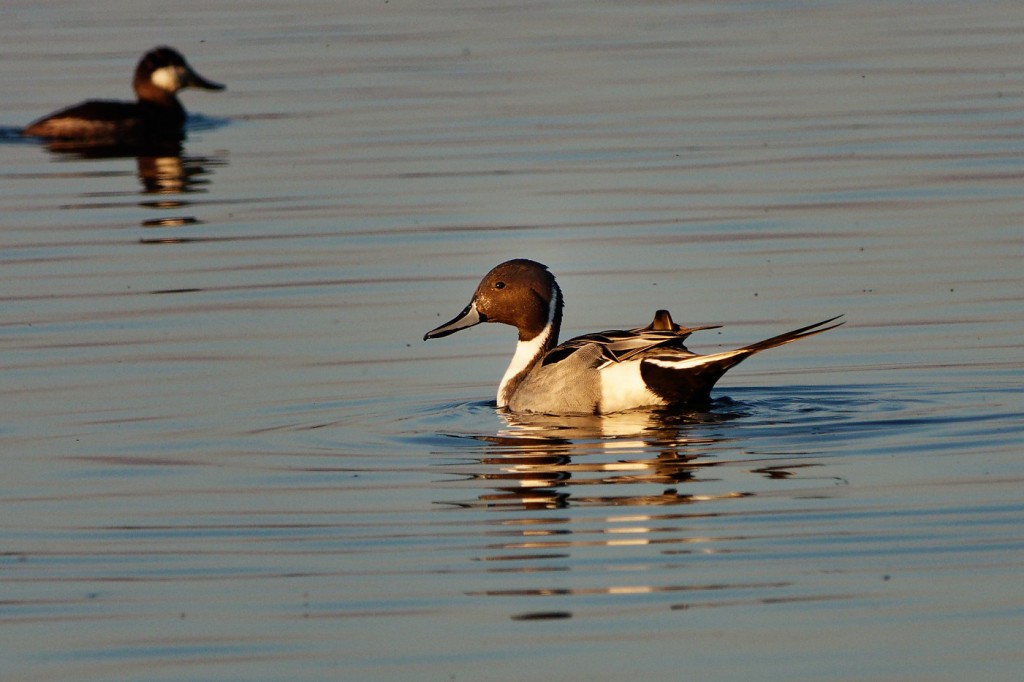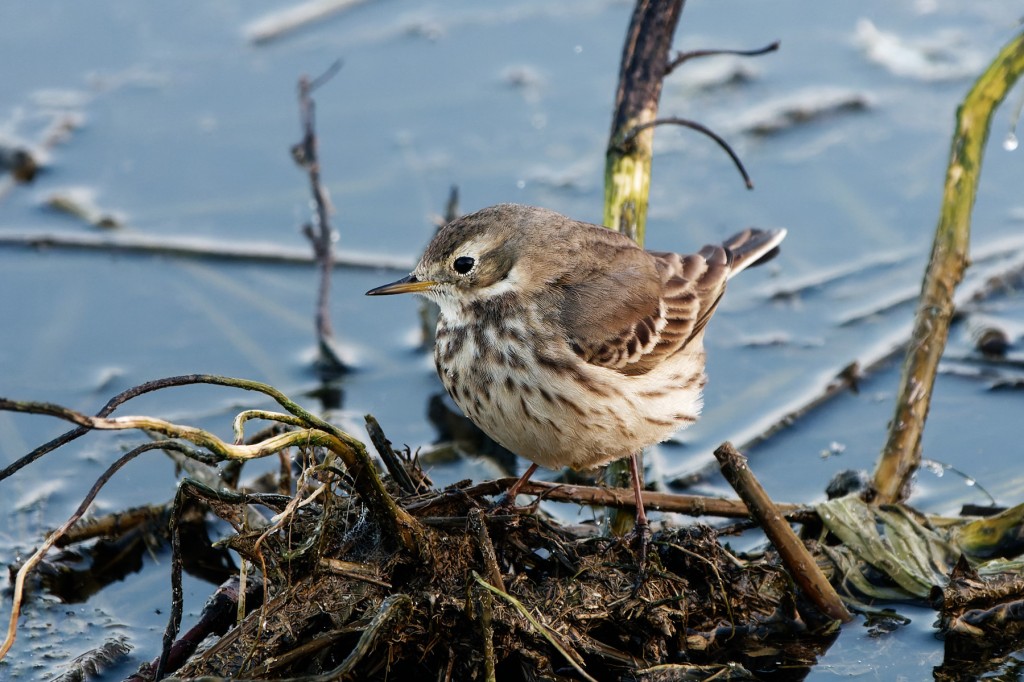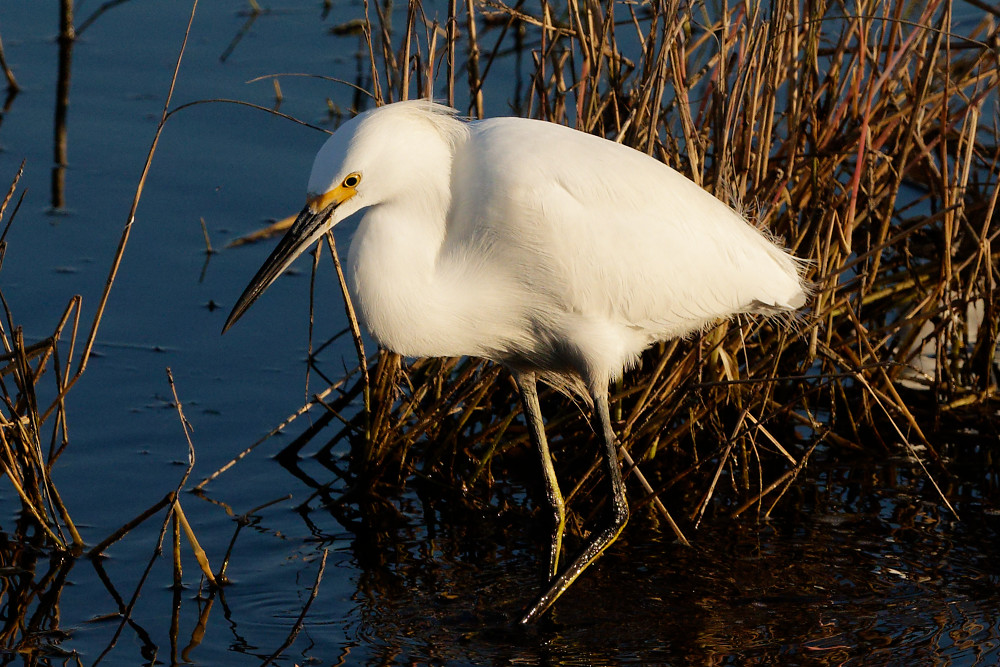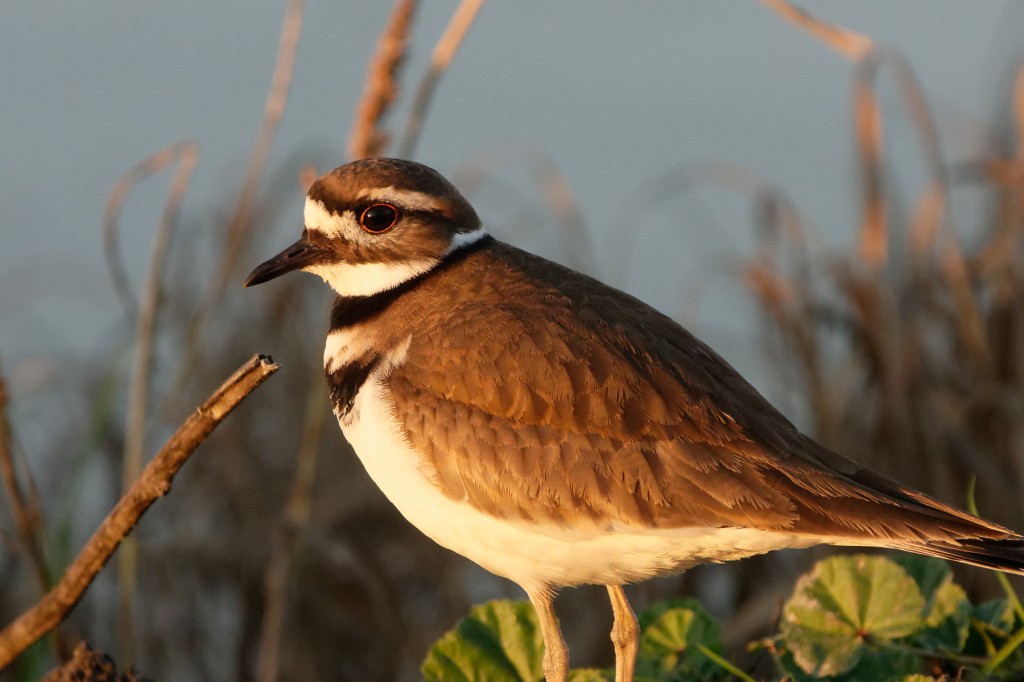Cloisters Community Park is tucked in between Highway 1 and the coastal dunes at the north end of Morro Bay. I guess there must be some historical reason for the name. There are no nuns here, nor medieval art. Anyway, it’s a small park consisting mostly of grassy open space and paved walkways. There’s a tiny wetland—maybe five acres—in the middle of the park that’s known as a fine site for birdwatching. It’s hard (not to mention prohibited) to access most of the wetland, but there’s little observation deck that protrudes into the south end. From there you can view a tiny area of shallow open water bordered by larger expanses of thick rushes and willows. We go by this spot fairly often. It’s surprising what will turn up.








